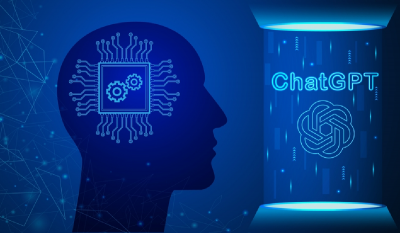Highlights:
- In 2023, AI language models have also become more adept at handling unstructured data, such as text, audio, and video.
- As Language Model AI has become more sophisticated and powerful, there has also been increased focus on ethical considerations and responsible use of AI.
In 2023, AI language models have continued to evolve and become more sophisticated, allowing them to perform a broader range of tasks and assist humans in more complex ways.
But why do they matter so much?
Importance of AI Language Model
Language Model AI is an algorithm designed to process, understand and produce language with high accuracy and fluency. These models are becoming increasingly popular due to the numerous benefits they offer. In this article, we will explore some of its benefits of it.
- Improved language processing and comprehension: Language Model AI can process and comprehend vast amounts of language data with high accuracy. This means they can quickly analyze and understand large amounts of text and provide insights into the meaning and context of the language used.
- Increased efficiency: It can automate many language-related tasks, such as summarizing, categorizing, and translating text. This can save time and increase productivity for individuals and organizations that need to process large volumes of language data.
- Personalization: The language AI Model can be trained on specific data sets, allowing them to provide personalized language recommendations and predictions. This can be particularly useful in marketing and customer service, where personalized language can increase engagement and satisfaction.
- Language translation: AI language models can accurately translate between languages, which are especially valuable in today’s globalized world. This can facilitate communication between people who speak different languages and improve cross-cultural understanding.
- Natural language generation: AI language models can generate natural-sounding language closely mimicking human speech. This can be useful in creative writing and content generation, where natural-sounding language is essential.
- Accessibility: It can make the language more accessible for people with disabilities, such as those who are visually impaired or have difficulty with speech. For example, text-to-speech and speech-to-text systems that utilize it can facilitate communication for individuals who struggle with traditional written or spoken language.
The Advancements of the AI Language Model
One of the most significant advancements in AI language models in 2023 has been in natural language processing (NLP). NLP refers to the ability of AI systems to understand and generate human language. With improvements in NLP, Language AI Models have become more capable of understanding the nuances of human language, including idioms, sarcasm, and context. This has made Language AI Model more useful in customer service chatbots, virtual assistants, and machine translation applications.
Another significant advancement in Language Model AI in 2023 is voice recognition and synthesis. With more advanced speech recognition technology, AI language models can now understand and transcribe speech more accurately.
Additionally, with improvements in speech synthesis technology, Language Model AI can generate more natural-sounding speech, making them more useful for applications such as text-to-speech, voice assistants, and audio content creation.
In 2023, AI language models have also become more adept at handling unstructured data, such as text, audio, and video. This has led to more advanced AI applications that can analyze large amounts of unstructured data to derive insights and make predictions.
For example, AI language models can be used to analyze social media posts to understand public sentiment about a particular product or topic or to analyze customer feedback to identify areas for improvement in a business.
Generative AI is one of the most exciting developments in AI language models in 2023. Generative AI refers to AI systems that create new content, such as text, images, and videos, based on patterns and structures learned from existing data. With advances in generative AI, Language Model AI have become capable of creating highly realistic and convincing content, such as fake news articles, deepfake videos, and even entire articles that are difficult to distinguish from those written by humans.
While generative AI has many potential applications, it also poses a significant challenge in ensuring the content’s authenticity and integrity. In 2023, there has been increased attention on developing techniques to detect and mitigate the effects of generative AI-generated content, such as using metadata and watermarking to identify the source of content and developing algorithms to detect and flag fake content.
As Language Model AI has become more sophisticated and robust, there has also been increased focus on ethical considerations and responsible use of AI. In 2023, there has been a growing awareness of the potential biases and unintended consequences that can arise from using Language Model AI, particularly in areas such as hiring and decision-making. As a result, there has been increased emphasis on developing transparent and ethical AI systems that can be audited and monitored for fairness and accountability.
In conclusion, the advancements in AI language models have significantly improved natural language processing, machine learning, and artificial intelligence. The introduction of large-scale language models such as GPT-3 has revolutionized the field of language generation and automated text processing, enabling the creation of more human-like and accurate machine-generated text. This has opened up new possibilities in areas such as chatbots, virtual assistants, and automated content creation, making it possible for businesses to leverage the power of AI to improve their operations and customer experience.
Furthermore, with ongoing research and development in the field, we can expect more innovative advancements in AI language models.













